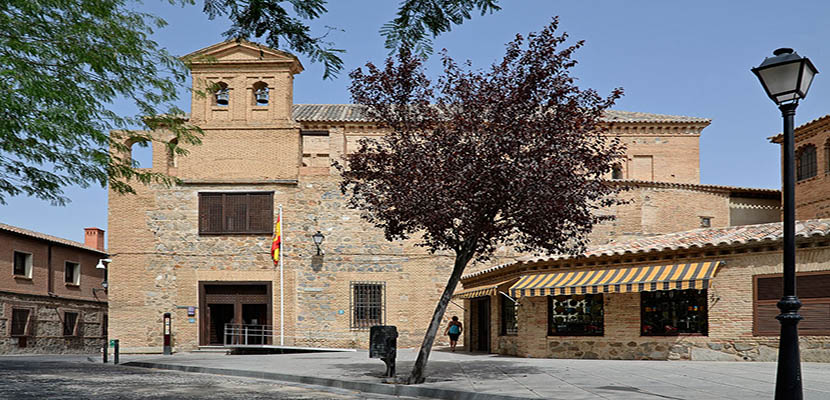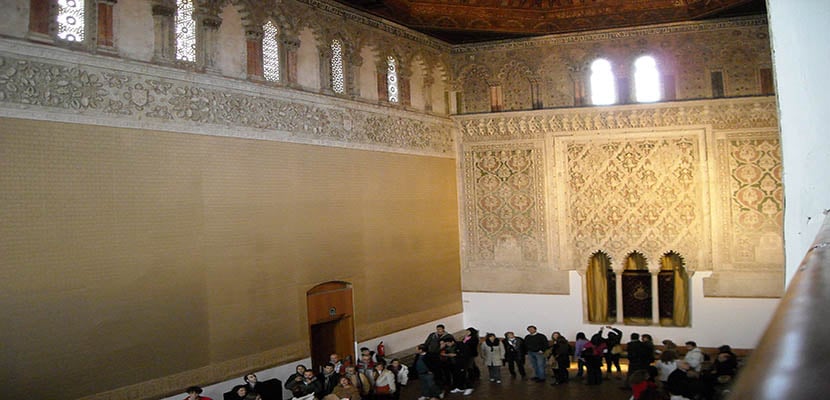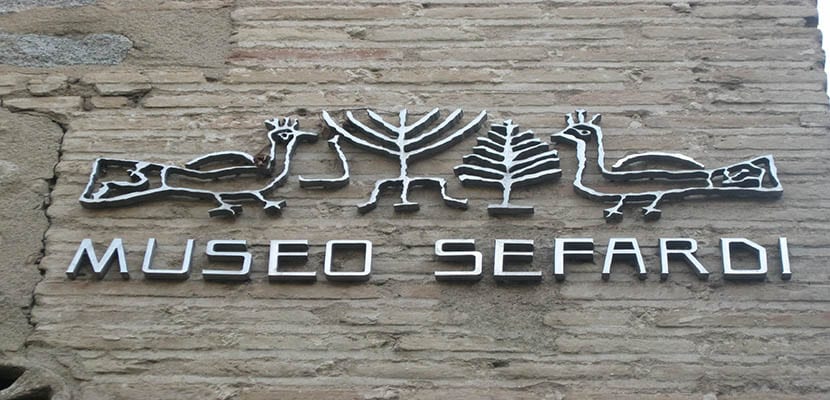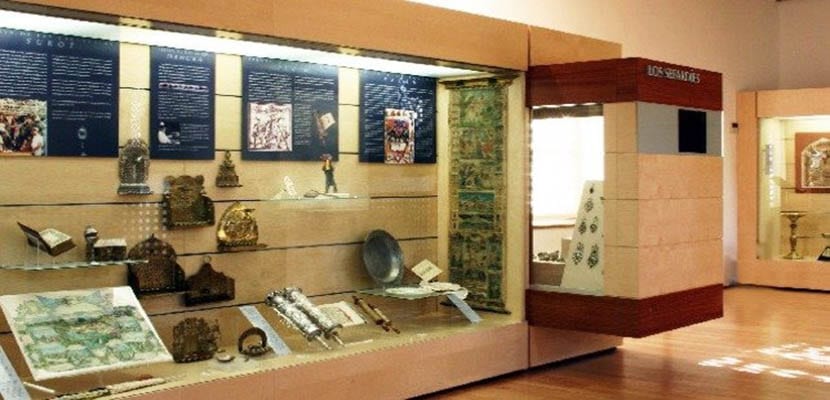
Image | Wikipedia
Located in the old Jewish quarter of Toledo and considered the best preserved medieval synagogue in the world, we find the Samuel ha-Leví Synagogue or Tránsito Synagogue. The various vicissitudes of history turned it into a church, a hospital, an archive of military orders, a hermitage and finally a Sephardic Museum to publicize the Spanish Jewish culture.
A space dedicated to the legacy of Sephardic customs and history as well as the Jewish religion as an essential part of Toledo's cultural heritage.
The Synagogue of the Transit
Between the years 1355 and 1357 the construction of the Synagogue of the Transit was ordered by Samuel ha-Leví (Treasurer in the court of King Pedro I of Castile) as the private chapel of the palace that he ordered to be built on a large piece of land next to the Tagus and whose limits reached the very edge of the river. However, only the synagogue is the only structure that has stood the test of time.
Its simple design in the living room is similar to that of many chapels in Christian palaces of the time, although it stands out for its austerity exterior and the decorative sumptuousness of the interior., full of geometric decorations linked to the vacui horror of oriental culture. That is, an artistic practice that consisted of filling in all the empty space in a work with some type of design or image. In this case, the wall upholstery is fully appreciated through an overflowing decoration based on Mudejar-style plasterwork.
The ornamental theme of the Tránsito Synagogue is limited to heraldry and epigraphy. In it you can see the shields of Castilla y León, texts along the frieze that exalt the figures of King Pedro, Samuel Leví and their architect Rabbi Don Mayr, interspersed between psalms and praises to God, in gratitude for the protection received.

Image | Wikimedia
The front of the east wall is profusely decorated with vegetal decoration of Arab creation called ataurique. While in the south wall you can still see the holes destined to house the wooden beams of the tribune reserved for women, from where they attended the liturgy hidden and separated from the men.
With the expulsion of the Jews in 1492, the Catholic Monarchs handed over the Tránsito Synagogue to the Order of Calatrava, who first converted it into a church and then in the XNUMXth century in a hermitage due to the decline of the military orders. But these have not been the only uses that it has been given. The synagogue was also a hospital and archive of military orders.
With the process of confiscations in the XNUMXth century, it was declared a National Monument and a series of measures were taken to rehabilitate it and stop its deterioration. Already in the 1964th century, in XNUMX, the Sephardic Museum was created in the Synagogue of El Tránsito. Four years later the museum would be declared the National Museum of Hispano-Jewish Art.

Image | CLM Press
Sephardic Museum
The rooms of the Sephardic Museum occupy the spaces of the old archive of the military orders of Calatrava and Alcántara. In total there are five rooms that house the archaeological and ethnographic material of the Spanish Jewish community related to its origins, its religion, its way of life, history and customs.
The first room shows the history of the Jewish people in the Near East of the ancient period. Here various objects dated between 2.000 BC and the XNUMXst century AD such as a Torah and other liturgical objects are exhibited.
The second room of the museum takes us to the life of the Jews during the Roman Empire, the Visigothic period and in al-Andalus. Meanwhile, in the third room we can learn about some new archaeological finds and the history of the Sephardic community in the Christian kingdoms.
Finally, the fourth and fifth rooms are dedicated to the life and festive cycle of the Sephardim. It is located in the so-called Women's Gallery, which was the space reserved for women in the synagogue.

Image | CLM 24
Of the entire collection, the so-called Old Bibliographic Fund stands out, consisting of books, manuscripts and documents in the Hebrew, Sephardic and Spanish languages that range from the XNUMXth to the XNUMXth century.
As complementary spaces we can see the north patio or Garden of Memory (where there are tombstones) and the east patio or rest area (where we can see archaeological remains of what could be the public baths of the Jewish quarter of Toledo). Finally, there is a multimedia space that, through sounds, allows us to relive a walk through the Jewish quarter of the city in the middle of the XNUMXth century.
Tickets and hours to the Synagogue of the Transit
Price of admission
General admission costs 3 euros and reduced costs 1,50 euros. It is free for those under 18 years of age, on Saturdays from 14:XNUMX p.m. and on Sundays.
Schedule
They are closed every Monday, local holidays and on January 1 and 6, May 1, December 24, 25 and 31.
They open Sundays and holidays from 10:00 a.m. to 15:00 p.m. The winter hours are from November 1 to February 28 from Tuesday to Saturday from 9:30 a.m. to 18:00 p.m. In summer they open from March 1 to October 31 from Tuesday to Saturday from 9:30 a.m. to 19:30 p.m.